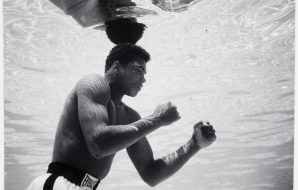The Evolution of Boxing: From Ancient Times to Modern Day
Introduction:
Boxing, a sport that traces its roots back to ancient civilizations, has evolved significantly over the centuries. From its humble beginnings as a form of hand-to-hand combat to the highly regulated and widely celebrated sport we know today, the journey of boxing reflects not only changes in athletic technique but also shifts in societal values, cultural influences, and technological advancements. Let’s embark on a journey through time to explore the fascinating evolution of boxing from ancient times to the modern era.
Ancient Roots:
The origins of boxing can be traced back to ancient civilizations such as Mesopotamia, Egypt, and Greece. In these early societies, boxing was often a brutal and raw display of physical prowess, devoid of the rules and regulations that govern the sport today. Ancient boxing matches were fought with bare fists and often ended only when one opponent was unable to continue. In Greek culture, boxing was celebrated as an essential component of the Olympic Games, showcasing the strength and agility of its competitors.
The Rise of Modern Boxing:
While boxing continued to be practiced in various forms throughout history, it wasn’t until the 18th and 19th centuries that it began to resemble the sport we recognize today. The introduction of rules and regulations, such as the Marquess of Queensberry Rules in the mid-19th century, transformed boxing into a more organized and structured sport. These rules established guidelines for fair play, including the use of gloves, rounds, and referee oversight, laying the groundwork for the modern boxing arena.
Cultural Influence and Iconic Figures:
Throughout its evolution, boxing has been deeply intertwined with culture, politics, and society. Legendary figures such as Jack Johnson, Muhammad Ali, and Mike Tyson transcended the sport, becoming cultural icons whose impact extended far beyond the boxing ring. These athletes not only showcased extraordinary athletic ability but also challenged societal norms and confronted issues of race, politics, and social justice, leaving an indelible mark on the sport and the world at large.
Technological Advancements:
The evolution of boxing has also been shaped by technological advancements, both in training techniques and equipment. From the development of specialized training facilities and workout regimens to innovations in protective gear and medical treatments, technology has played a crucial role in improving the safety and performance of boxers. Additionally, the rise of television and digital media has transformed the way boxing is consumed, allowing fans from around the world to witness matches in real-time and access a wealth of historical footage and analysis.
The Modern Era:
In the 21st century, boxing continues to captivate audiences with its blend of athleticism, strategy, and spectacle. The sport has expanded its global reach, with fighters hailing from diverse backgrounds and competing on international stages. While controversies and challenges persist, such as concerns over athlete safety and the influence of commercial interests, boxing remains a beloved and enduring tradition that resonates with millions of fans worldwide.
Conclusion:
The evolution of boxing from ancient times to the modern day is a testament to the enduring appeal of this dynamic and evolving sport. From its origins as a primal form of combat to its current status as a highly regulated and globally celebrated athletic pursuit, boxing has adapted and transformed in response to changing times and societal values. As we look to the future, one thing remains clear: the spirit of competition and the thrill of the fight will continue to inspire and unite us for generations to come.









